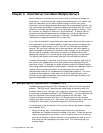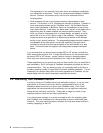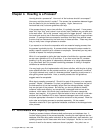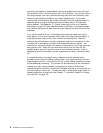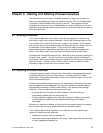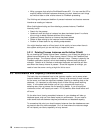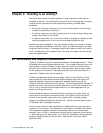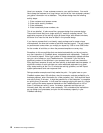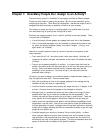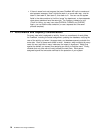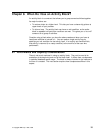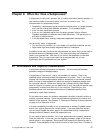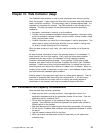
Chapter 7. How Many People Do I Assign to an Activity?
There are many options in FlowMark to help assign activities to different people.
These are quite helpful in getting the job done. But do not go overboard, giving
everything to everyone. Think about the implications. Narrow the range of who is
assigned activities as quickly as possible in the flow of your process.
One reason to assign an activity to multiple people is to enable them to do their
own load balancing, all picking from a single list of work.
But there are negative aspects if you “resolve” activities to too many people. There
is more work for FlowMark:
It must find each of these people and update their work lists in the database.
Then it must send messages over your network to update each person's work
list (when the activity becomes “ready,” then when it begins “running,” and
again when it is “finished”).
Besides, a constant stream of items to a work list can be an annoyance to the
users, because:
Their work list will “roll,” since they share it with many others. Activities will
constantly be added, changed, and deleted, as their work list reflects the tasks
of others.
There is an increased probability of conflicts. If all users have their work list
sorted in the same order with the same items, all will have the same activity at
the top. When one selects that top activity, someone else may also be
selecting it at the same time. Only one will get it; the others are told that
someone else is doing it.
Of course, you want to design your workflow system to keep the users happy, so
they can get more work done. Here are some ideas:
Start with a guideline of three to five people assigned to an average activity
(whether by role, skill level, or organization).
Limit the number of persons who receive any single activity to 10 people, or 20
at most. Consider three to five people as the average to shoot for.
Although early in a process flow there may be a need to put things on more
people's work lists, try to narrow the number as the flow progresses. The
number may ebb and flow at times, but try to keep it under control. There are
many options on the staff pages in the activity notebook that can help you.
Spend some time considering how best to use the different capabilities of role,
organization, and skill level. How will you use them to divide and differentiate
the total population of users? Intelligent use of these staff attributes is what will
enable you to assign individual activities to reasonable numbers of just the right
people to do a specific job.
Consider assigning an activity to “whoever” did an earlier activity. In effect,
when a person selects an activity from a shared role, and the same role has
later activities in the process flow, then have that person own the rest of the
activities for that role in that specific process. This may be desirable since this
person is familiar with the details of this specific instance.
Copyright IBM Corp. 1996, 1998 13



